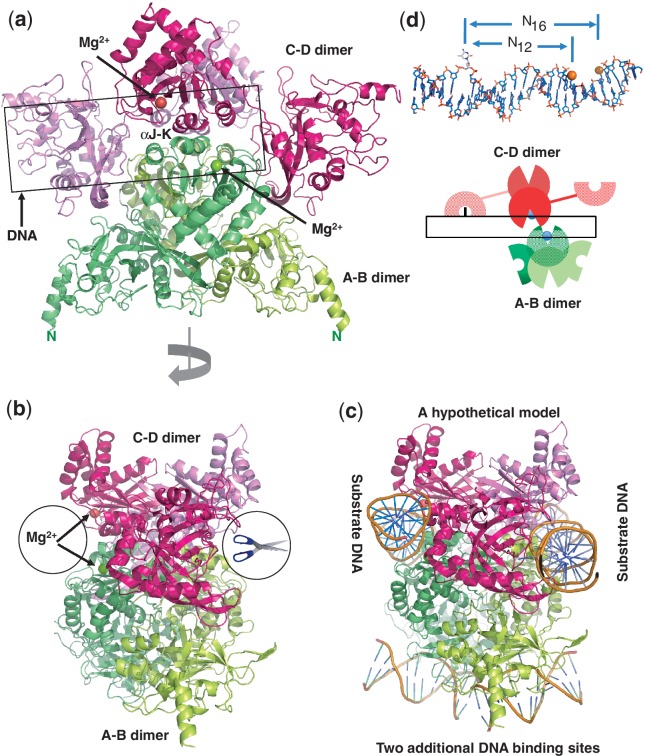Figure 4.
A unique tetramer of MspJI. (a) Two back-to-back dimers form a tetramer with four DNA-binding domains and two face-to-face ds ‘scissors’ that cleave hexanucleotides producing four base pair staggers (N12/N16). (b) A 90° view from that of panel a. (c) A hypothetical model of MspJI with two DNA molecules bound in the active sites of the ‘scissors’ (panel b). These two DNA molecules could be connected through DNA looping. Two additional 5mC-containing DNAs could be bound through the N-terminal DNA-binding domains of A–B dimer (bottom). (d) A cartoon illustration of the proposed MspJI tetramer–DNA complex mediated by reading of 5mC by one monomer (Molecule C), cutting the proximal N12 site in the top strand by the second monomer (Molecule D) and the distal N16 cut in the bottom strand by the third monomer (Molecule A). Top panel shows a DNA molecule with a flipped 5mC and the proximal N12 (top strand) and distal N16 (bottom strand) cleavage sites.

